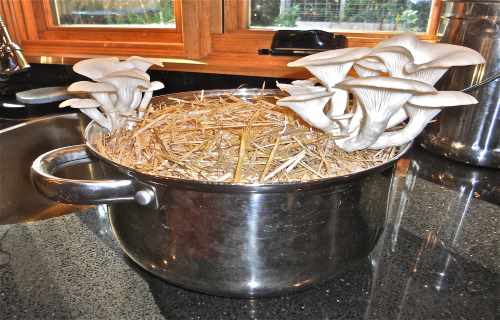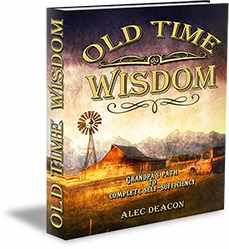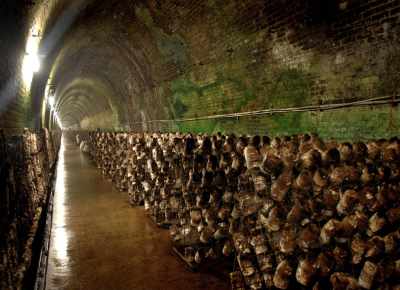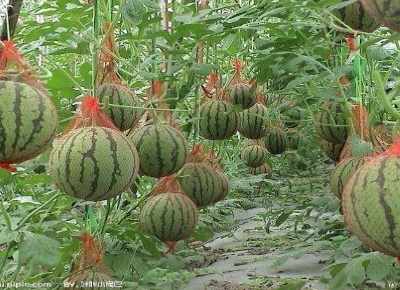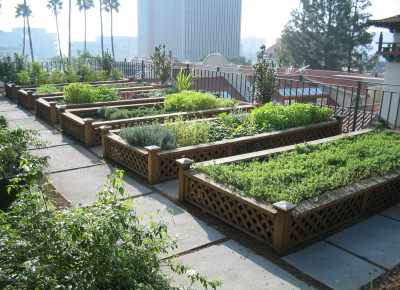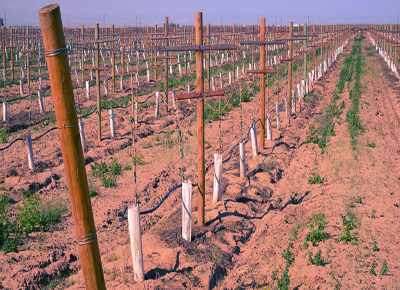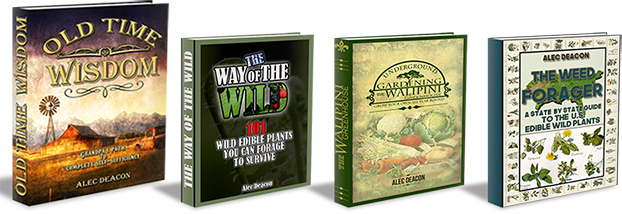Before complex irrigation systems, farmers still managed to eke out crops even in the worst droughts. As water shortages become more common, today’s farmers are being forced to return to old ways of finding the water hidden in nature.
Before we thought the water supply would last forever (or at least several political cycles), we had dry farming. As the worst drought in decades grips the U.S., dry farming is getting a second look.
Farmers see the horizon, and there’s not much water on it (The “global water shortage is now ‘chronic’” according to a UN report). In the U.S., the federal government has added at least 218 more counties to the list of natural disaster areas, now more than half of the total counties in the U.S. are low on water.
You don’t need a garden to grow your own fruit and veg. If you’re a budding horticulturalist with no space to swing a trowel, here are some creative – and sometimes bizarre – ideas from around the world.
You don’t need a garden to grow your own fruit and veg. If you’re a budding horticulturalist with no space to swing a trowel, here are some creative – and sometimes bizarre – ideas from around the world
Mushrooms in disused railway tunnels and strawberries in drainpipes… perhaps it’s silly but I find food growing in strange places both bizarre and romantic. Horticulture can be so creative. It can involve melons growing on net curtains and rice growing on pavements. Introduce an against-the-odds element – like doing it in Tokyo, that seething, steely metropolis – and it’s somehow all the more exciting.
My love of the bizarre and the romantic – and of vegetables – has led me on a journey, albeit it an armchair one. I’ve found people growing food in some unlikely places, for fun and from necessity, and on a personal and a commercial scale.
Rowena and Philip Mansfield farm fruit, herbs and fish in Anglesey, North Wales. I was drawn to this Welsh couple, who have swapped urban life for something very rural, because they’ve been growing strawberries in a drainpipe.
From sections of humble pipe, and employing less humble hydroponics, they’ve harvested 75lb of berries. They’re dismissive of my delight. ‘Nothing original about drainpipes,’ says Philip. ‘We look at all pipes and see them sprouting food. Just pass water along the tube and let the plant roots touch the liquid – they’ll take up whatever nutrients they need.’
The couple have branched out into aquaponics and now sell rainbow trout and carp to a small but committed circle of customers. Aquaponics is an integrated system that centres around the natural life cycle of a fish. Philip explains: ‘Fish produce ammonia in their normal breathing, the ammonia is converted by bacteria in growbeds to produce nitrates that feed the plants. The returned water has been cleansed ready for the fish to utilise it again.
‘I think we should all be aware of the need to grow food by whatever means. There are thousands of empty buildings that could be used to grow food to feed the local community.’
I ask them whether it would be fair to call their way of life idyllic. ‘Absolutely. The hours are long, the money scarce, but there’s no travelling, no crowds on buses or Tube. You learn to live alongside nature and it rewards you generously. We breathe the growing grass.’
Grown in darkness
From old Wales to New South Wales then, to talk to an Australian microbiologist who has been growing exotic fungi in disused railway tunnels for more than 20 years. I send Dr Noel Arrold some questions by email. He isn’t a fan of typing so sends me photographs of his handwritten notes in reply. They’re a joy to decipher.
It turns out that Australians have been growing mushrooms in this way since the 1930s, when old railway tunnels around Sydney Harbour were used to produce them for canning. Faced with a flood of cheap canned mushrooms from Asia, the industry turned towards fresh market production and the tunnels fell out of use. But in 1987 Dr Arrold realised tunnels would be a perfect place to grow exotic fungi.
‘Varieties like shiitake, oyster, wood ear and enoki grow naturally in the cool, dim and humid forests of Asia. Cultivators had developed ways of growing these mushrooms on sawdust. I discovered it was possible to grow them on Australian eucalyptus sawdust, while the tunnel environment resembled conditions that occur in the forests,’ explains Dr Arrold.
‘Our farm produces approximately 1,500kg of mushrooms a week, small compared to white button mushroom farms, which produce 20 tonnes a week. But ours is a high-value crop. Exotic mushrooms are attractive because the production process is chemical-free, low-energy and uses waste material.’
Hanging low
From Asian exotica in Australia to Tokyo, which I’m surprised to find is full of plant life. Jared Braiterman of the Tokyo University of Agriculture tells me my surprise is misplaced. ‘In Edo Tokyo (from 1603 to 1868), samurai had large vegetable gardens to feed their families and to supplement their incomes,’ he reveals. ‘The idea that food cannot come from the city is relatively recent and inaccurate. Most foreigners think of Tokyo as a vast concrete jungle. Yet it is small-scale gardening that makes Tokyo such a welcoming place to live.’
Jared tells me about a gardener who is growing a curtain of bitter melons outside his house. ‘Bitter melon – a prickly green vegetable that tastes great with ground pork – is easily grown on vertical nets. It’s a way to grow food when you don’t have a yard, and a way to shade sunny windows in the heat of the summer.’ He also tells me that people grow rice on the pavement in old Styrofoam containers.
‘In the past, city and nature were considered separate spheres. Now a very urbanised world is looking to erase those boundaries. And Tokyo provides lots of great inspiration. I think growing a single cucumber can change how people relate to nature and food. Self-sufficiency is less a goal than raising awareness.’
Mopping it up
To Africa next, where self-sufficiency is the primary goal. The UN’s Food and Agriculture Organization has been collaborating with the Senegalese government to start community gardens in Dakar and neighbouring Pikine. The project encourages people to grow food in yards, on roofs and in other vacant places. They say more than 4,000 residents have started micro-gardens that produce 30kg of vegetables per square metre every year – enough to feed a family, with some left over to sell. It’s an example of inventive urban agriculture that’s changing lives, pulling families out of poverty and improving access to healthy food.
Back in London, architect Andre Viljoen worries about my interest in the odd when it comes to urban food-growing: ‘My concern about focusing on the quirky is that the whole concept is dismissed as irrelevant, or small projects become tokens, effectively greenwash.’ I wanted to talk to Andre because of a book of his: Continuous Productive Urban Landscapes, a design concept that proposes the integration of urban agriculture into cities.
‘There are several different types of urban agriculture, and these should be distinguished. In the UK it is too often only associated with allotments. At one end of the scale we have small, individual and perhaps quirky growing. At the other end we have large-scale commercially viable market gardens, and these will be essential if urban agriculture is to have a significant and measurable impact.’
I appreciate Andre’s concern. We need to take large-scale urbanagriculture projects seriously if cities are to become sustainable, but I still can’t help being charmed when some fellow Londoners tell me about their recent, minor growing exploits. One has turned a sunny parking bay into a vegetable plot, while another has been sprouting seeds on an old mop head. Surely growing can be serious and fun, and surely both things are important.
Dry farming
Dry farming, while not designed to counter the worst droughts, “evokes the image of a wet sponge covered with cellophane,” writes Brie Mazurek, the online education manager at the Center for Urban Education about Sustainable Agriculture (CUESA).
By tapping the moisture stored in soil to grow crops, rather than using irrigation or rainfall during the wet season, dry-land farming was a staple of agriculture for millennia in places like the Mediterranean, and much of the American West, before the rise of dams and aquifer pumping.
During the rainy season, farmers break up soil then saturated with water. Using a roller, the first few inches of the soil are compacted and later form a dry crust, or dust mulch, that seals in the moisture against evaporation.
In places like California, where the expensive (and fast evaporating) irrigation systems of the Central Valley are seen to be running on borrowed time, dry farming has begun to spread among a small cadre of farmers along the coast where dry farming was once standard practice since the undeveloped coast line would support little else.
Farmers like David Little of Little Organic Farm, reports Mazurek, are rescuing old ways for modern applications. “In the beginning, I searched out people who were known dry-farmers,” says Little, who started farming in 1995, in the report. “It seemed like no one had done it for 30 years or so.” Little now grows potatoes on 30 acres in Marin and Petaluma counties in California.
Yet dry farming is unlikely to win over farmers who still have abundant access to water, fertilizer, and big markets. “Dry farming is not a yield maximization strategy,” says the California Agricultural Water Stewardship Initiative. “Rather it allows nature to dictate the true sustainability of agricultural production in a region.”
In place of huge yields and produce (fruit and vegetables may grow twice the size of their dry-land counterparts), farmers get smaller, hardier crops with several times the flavor (the water stress concentrates sugars and nutrients), but the yield penalty in bad years is steep: 12 tons per acre for apples, compared to 30 to 40 tons produced by large apple farms in the Central Valley, reports CUESA, and even worse results for drought-ravaged grains in places such as Idaho, reports NPR.
But dry-land farming is not about using as much resources as possible to optimize a year’s yield. It’s about making do with less without jeopardizing the future’s harvest. “The coast of California used to be our main source of food in the state, until they started developing farms in the Central Valley because of all the water,” Little said to CUESA. “Now they’re running out of water.”
Old-time gardeners were ahead of their time! Their ideas for wildflower gardens, children’s gardens, organic pest controls, decorating with houseplants, healing with herbs, and more are at the forefront of modern gardening trends. Take a look back to the future of gardening with this incredible collection of gardening advice from successful 17th-, 18th-, 19th-, and early 20th-century gardeners.
Early gardeners knew what they were doing–they had to, since they depended on their plants for food, medicine, home decorations, and recreation! Whether you’re growing vegetables, flowers, herbs, fruits, trees, shrubs, wildflowers, houseplants, or lawn grass, these old-time tips will help you get the most out of your plantings. Do you want a lusher lawn? How about more beautiful flowerbeds or hints for making your yard look bigger? You’ll find all that and more in Old Time Wisdom.
Old-Time Wisdom” boxes present early gardeners’ best planting notions.
* Tried-and-true recipes from early kitchens will tickle your tastebuds.
* “Strange but True” boxes reveal weird, wacky, and wonderful gardening techniques.
* A source list makes it easy to locate wonderful old-time plants.
* Authentic old-time illustrations take you back to a time when garden tips were on everyone’s lips.
* A “Recommended Reading” list guides you to more great ideas from the past.
Books can be your best pre-collapse investment.
The Lost Ways (Learn the long forgotten secrets that helped our forefathers survive famines,wars,economic crisis and anything else life threw at them)
Survival MD (Best Post Collapse First Aid Survival Guide Ever)
Conquering the coming collapse (Financial advice and preparedness )
Liberty Generator (Build and make your own energy source)
Backyard Liberty (Easy and cheap DIY Aquaponic system to grow your organic and living food bank)
Bullet Proof Home (A Prepper’s Guide in Safeguarding a Home )
Family Self Defense (Best Self Defense Strategies For You And Your Family)
Survive Any Crisis (Best Items To Hoard For A Long Term Crisis)
Survive The End Days (Biggest Cover Up Of Our President)
SOURCE : fastcompany.com – theecologist.org

